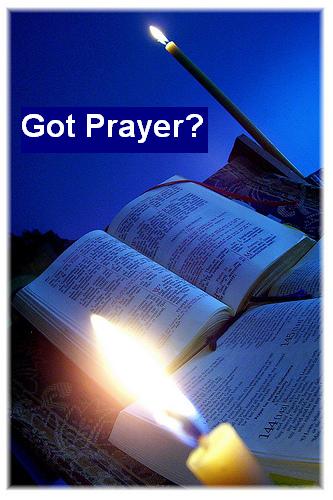It is well known that in many ways St. Augustine was influenced by Plato, whereas St. Thomas Aquinas was more influenced by Aristotle. Though the distinctions of influence are not so stark, it is true that each “baptised” the thought of these two great Greek philosophers in their own way. That said, I have found it very helpful to know a little about the philosophy of Plato when reading Augustine, and the same goes for Aristotle when reading Aquinas. The Summa was in many ways a confusing labyrinth of philosophical jargon and nonsense until I came to understand (in part) the thought of Aristotle. Once I had a grasp on the Aristotelian distinctions of form and matter, St. Thomas opened up before me in all it’s grandeur. Perhaps that is putting it too dramatically, but something like that surely happened.
In an endeavor to more fully understand the philosophical underpinnings of my Christian faith, not to mention trying to better understand my own existence and the world around me, I have been slowly making my way through Frederick Coplestone’s A History of Philosophy. There are 9 volumes in all (for us in the United States), and I have just made my way into Volume 2. The first volume deals with ancient Greek and Roman philosophy and is perhaps the most important volume for understanding great Christian thinkers like Augustine and Aquinas, as it goes through in good detail the thought of both Plato and Aristotle. Volume 2 picks up with the philosophical influences of the early church fathers, which acts as a prelude to the first great Christian philosopher, St. Augustine. It should be noted that Coplestone is fully aware that the early fathers did not make distinctions between philosophy and theology. Therefor he readily admits of the dangers inherent in untangling a philosophy (his work is after all one of the history of philosophy) from the theology of those who saw no such distinctions. Nevertheless, clear influences of neo-platonism and, to some extent, stoicism can be traced in the thought of these early Christian thinkers such as Justin Martyr, Origen, Tertullian, and John Damascene. Likewise, these influences can be seen in the two great minds of the Western Church, Augustine and Aquinas.
In all, the 2nd volume of Coplestone’s work will cover the philosophy of the early Church through St. Augustine, and on to St. Anselm, St. Bonaventure, St Albert the Great, St Thomas Aquinas, and Duns Scotus; a period that spans 1,300 years. Coplestone covers all of this under the heading of “Medieval Philosophy” though he recognizes that he uses the term losely and that no period ever remains distinct from that which precedes it or comes after. I happily detect a note of Christopher Dawson’s influence! Volume 3 will pick up where volume 2 left off and go through what Copleston refers to as “Late Medieval and Renaissance Philosophy.” This 3rd volume will begin with William of Ockham and go through to Francis Bacon and the dawning of a Renaissance philosophy with Francis Suarez.
The first 3 volumes of Coplestone’s A History of Philosophy will serve as an introduction to his much more lengthy treatment of modern philosophy. As Coplestone notes, you can’t understand modern philosophy without understanding what came before. As the famous dictum has it: all philosophy is but footnotes to Plato. This may be a slight overstatement, but the whole of philosophy can certainly be seen as a working out of the issues raised by Plato nearly 2,500 years ago. It’s just that in this working out, there are some outright rejections of parts of Plato’s thought if not all of it. Nonetheless, these rejections have no basis without Plato and those that followed him.
As I said, Volume 4 of Coplestone’s A History of Philosophy begins his lengthy treatment of modern philosophy. The next 6 volumes will cover everything from Descartes to Hume to Kant to Hegel, Marx, and Nietzsche, all the way through to the philosophy of the last century with Bertrand Russel, Ludwig Wittgenstein, and Jean-Paul Sartre; what is now known as post-modern philosophy. Of course, everything in between is covered as well, and this is primarily whyI have chosen to read through Coplestone’s intimidating 9 volume work. For reasons unknown to myself, I have a keen interest in modern philosophy, but I recognize the need for understanding the philosophy of the ancient Greeks and the classical Christian thinkers of the Church’s first millennium. The fact that Coplestone will give me a grounding in the “pre-modern” philosophers before plunging me into the thought of Descartes and beyond is something that I truly appreciate.
Having never taken a university class in anything resembling philosophy or theology – my university studies were more along the lines of calculus and advanced physics – I am self taught in matters pertaining to philosophy and theology. While the journey is fascinating, being self taught comes with its own very real limitations. I know plenty of “stuff” but not having the advantage of a classroom and a professor with whom to interact, I find it hard to synthesize all that I have learned. I know Plato taught X and Aquinas taught Y and Nietzsche taught Z, but I have hardly a clue on how X, Y, and Z are related or why Nietzsche taught Z in stark contrast with Plato’s X. This is where Coplestone comes in. By going on a journey from Plato to Sartre, I hope this synthesization – which is indeed a higher faculty of reason – will begin to materialize.
Coplestone’s A History of Philosophy comes highly recommended by many in the academic world. While Coplestone was a Jesuit and writes from a clearly Christian and Thomist point of view, his massive work also enjoys the support of secular philosophers. The blurb on the back of the book probably says it best, although keep in mind this is a blurb from the publisher so the danger of exaggeration is always present.
Conceived originally as a serious presentation of the development of philosophy for Catholic seminary students, Frederick Copleston’s nine-volume A History Of Philosophy has journeyed far beyond the modest purpose of its author to universal acclaim as the best history of philosophy in English.
Copleston, an Oxford Jesuit of immense erudition who once tangled with A. J. Ayer in a fabled debate about the existence of God and the possibility of metaphysics, knew that seminary students were fed a woefully inadequate diet of theses and proofs, and that their familiarity with most of history’s great thinkers was reduced to simplistic caricatures. Copleston set out to redress the wrong by writing a complete history of Western philosophy, one crackling with incident and intellectual excitement — and one that gives full place to each thinker, presenting his thought in a beautifully rounded manner and showing his links to those who went before and to those who came after him.
The result of Coplestone’s prodigious labors is a history of philosophy that is unlikely ever to be surpassed. Thought magazine summed up the general agreement among scholars and students alike when it reviewed Coplestone’s A History of Philosophy as “broad-minded and objective, comprehensive and scholarly, unified and well proportioned… We cannot recommend [it] too highly.”
After having read some 600 pages into the multi-thousand page work, I can add my recommendation as well. It may take me 10 years to complete all 9 volumes, but I have decided that is just fine with me. As I get older, I am learning the fine art of patience, a virtue I have lacked my entire life. If the good Lord blesses me with many more years I will enjoy learning more and more about philosophy, a topic I find so fascinating. If I do not make it through all 9 volumes that is ok too. There are far more important things in life, and my relationship with my Lord and Saviour is all that really matters in the end. Reading Coplestone (and Chesterton, and von Hildebrand, and C. S. Lewis, and Emil Brunner, and Ratzinger, and…. oh I could go on) is just icing on the cake of life.
I hope to quote more from Coplestone in the future of this blog. Not that the history of philosophy is oh so exciting (although, to me it kind of is), but one of the purposes of this blog is to help me think through the things I have read. In fact, that may be the real reason this blog exists. I find that as I quote verbatim from the authors I read, and write about the things they are saying, I am much more apt to remember the things I have learned. Whether or not anybody else actually reads what I write or quote is completely secondary (no offense!). I just recognize that others may benefit from what I read and write as well. All that to say, look for some quotations from Coplestone in the future, although don’t expect uber excitement unless your a bit of a philosophy dweeb like myself.
Until next time, have a very blessed Holy Week!
 In his 1938 work, Catholicism, Henri de Lubac begins by stressing the theme of communion that runs throughout the whole of Christian doctrine. From the doctrine of the Church as the Mystical Body of Christ to the Sacraments to our final destiny, the theme of uniting a fallen humanity stands out. At the very beginning of the book, de Lubac points out that because we are all created in the one image of the one God, we are inexpressibly bound to one another.
In his 1938 work, Catholicism, Henri de Lubac begins by stressing the theme of communion that runs throughout the whole of Christian doctrine. From the doctrine of the Church as the Mystical Body of Christ to the Sacraments to our final destiny, the theme of uniting a fallen humanity stands out. At the very beginning of the book, de Lubac points out that because we are all created in the one image of the one God, we are inexpressibly bound to one another.